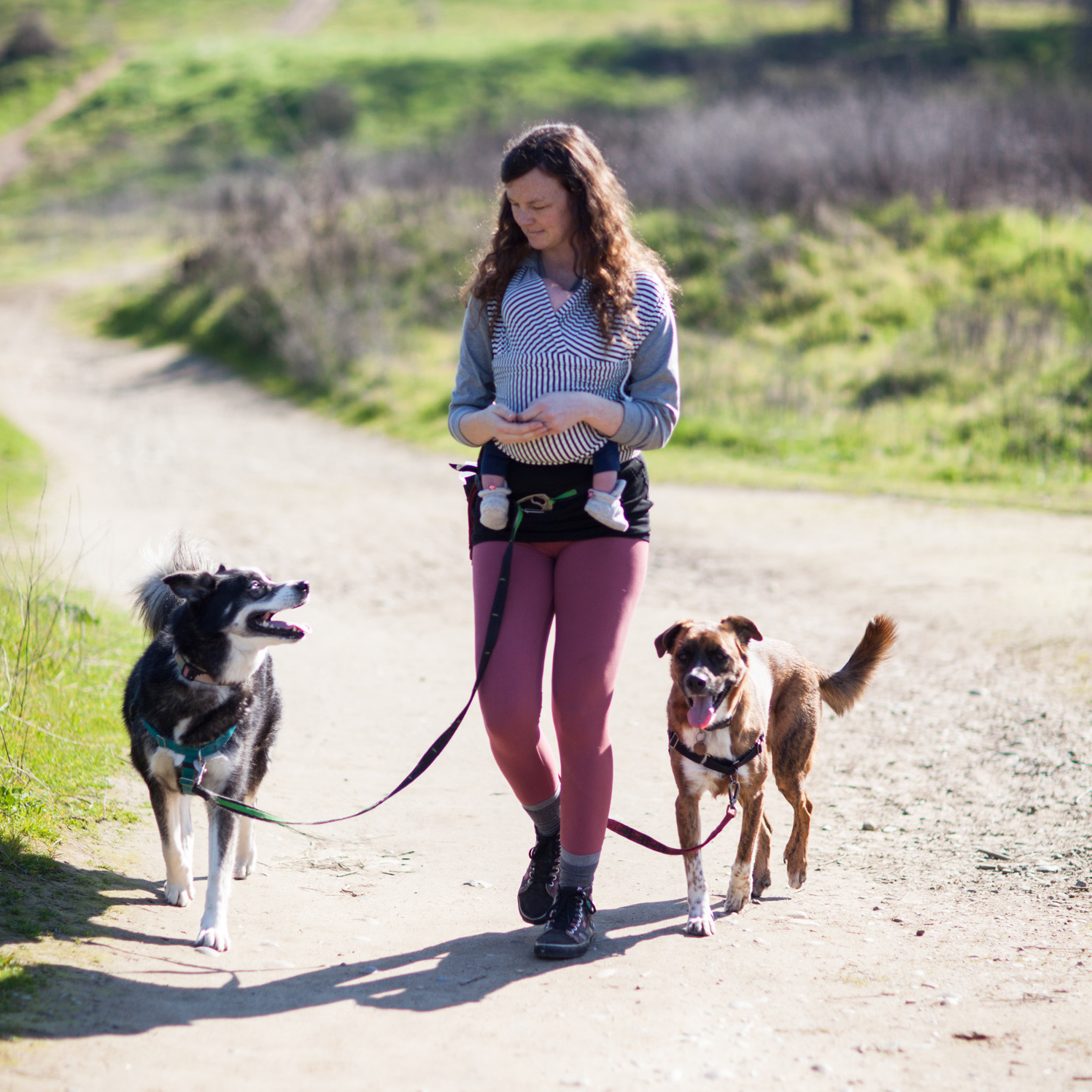Are you getting frustrated with distractions getting in the way of building reliable cues with your dog? Distraction is SUCH a big umbrella term. And in some ways, I think it can be a misnomer. In many cases “distractions” are just moments in which our dogs’ priorities are misaligned with our own.
A big source of frustration for dog owners is when they feel their dog knows something but is actively choosing to ignore the cue or not perform the behavior. The fact of the matter is that our dogs may very well know the behavior in certain contexts, and may even have heard you cue them, but have other priorities. Sniffing a new environment, for example, can be of huge importance to our dogs! To us it can seem silly and annoying, but to our dogs the information gleaned from sniffing is super important! Observing the comings and goings of other dogs, greeting or warding off other dogs, getting to that dang squirrel. These things are all super important to our dogs and often take precedence over, say, sitting. So, what can we do?
Give your dog time to explore the new environment
One easy way to help remedy this frustration is to simply give our dogs some time. Working in a new environment is inherently distracting. Evolution tells our dogs to be vigilant and get to know their new environment! If they were not owned dogs, carefully exploring a new environment could be the difference between life and death! So when you’re beginning to work in new places, I urge you to let your dog be a dog for a moment and take it all in before jumping straight in to work mode. Not only will this help them get some of the information they feel they need, but it will also help them relax. Sniffing is an enormously relaxing activity for our dogs and great for their stress levels.
Introduce distractions slowly
If you’re going from working in a quiet bedroom straight to training in a busy park, you’re going to be frustrated. Be thoughtful about the way that you increase difficulty so that your dog can succeed. Remember - the more your dog succeeds, the deeper their reinforcement history for a given behavior becomes. And this means repeating that behavior will become a higher and higher priority!
Start by changing the setting and timing of your training - within your home at first. If you’ve taught new behaviors in a bedroom, work in the living room, the kitchen, the bathroom even! Work on them when your family is home doing their normal stuff, and then ask them to make a little extra noise! You can introduce controlled distractions like favorite toys laying around, or other animals in the household present (ask for another member of your household for help managing the other animals if need be).
Then, when you feel ready to take training outdoors, you may start by simply training with the door open! Then move your session out into your backyard. Next steps may be working on training near the open front door (on leash) and then on your front steps or porch, and then in your front yard. The idea here is to take things as gradually as needed for success. Once all those locations have been worked on, you may be ready to start with a quiet park day.
Consider your training goals
Ultimately all the different variables you choose to introduce into your training plan will make your behavior stronger (if you are setting your dog up for success). HOWEVER, it’s a good idea to have a sense of what your goals are so that you can create a plan that supports that specific goal.
For example, if your end goal is to have a dog that can hang out on a mat at a brewery or coffee shop, you’re going to need to practice your stationing behavior with a lot of strangers walking in proximity, and likely other dogs passing by, too. You could begin this at home, having friends or family members practice walking past your dog’s mat. At first maybe from five feet away, and then closer and closer. Once your dog is comfortable with folks walking right past (and at varying paces, too!) make it more challenging by having them walk past with food! Then build on this in public places, in the presence of lesser known humans, around other dogs, etc.
If your goal is to work on leash manners in the presence of other dogs so that you can navigate narrow or busy trails or sidewalks with your dog, it’s important to have the behavior rock solid at home before taking it “on the road.” Then you’ll likely want to consider arranging training sessions in locations where you know dogs will be present but not in close proximity - for example a dog park where you can work across the street, or a park with wide open spaces alongside the trail so you can begin by practicing walking calmly with dogs 15 feet away, then 10 feet, and so on and so forth. Keep in mind that walking past other dogs that are totally casual and disinterested is a completely different task than walking past a dog that is barking or lunging.
By creating training plans that build on the specific goals you have in mind, you'll be able to hone in on the skills needed to make your goal achievable!
Your dog will likely throw you some curve balls, too. Things we as humans can't perceive can be big distractions (ie novel animal scents), and things we don't consider to be potential distractions can totally throw our dogs for a loop sometimes (like new floor/ground texture or strangely placed trashcans...) So a little flexibility is also helpful!

